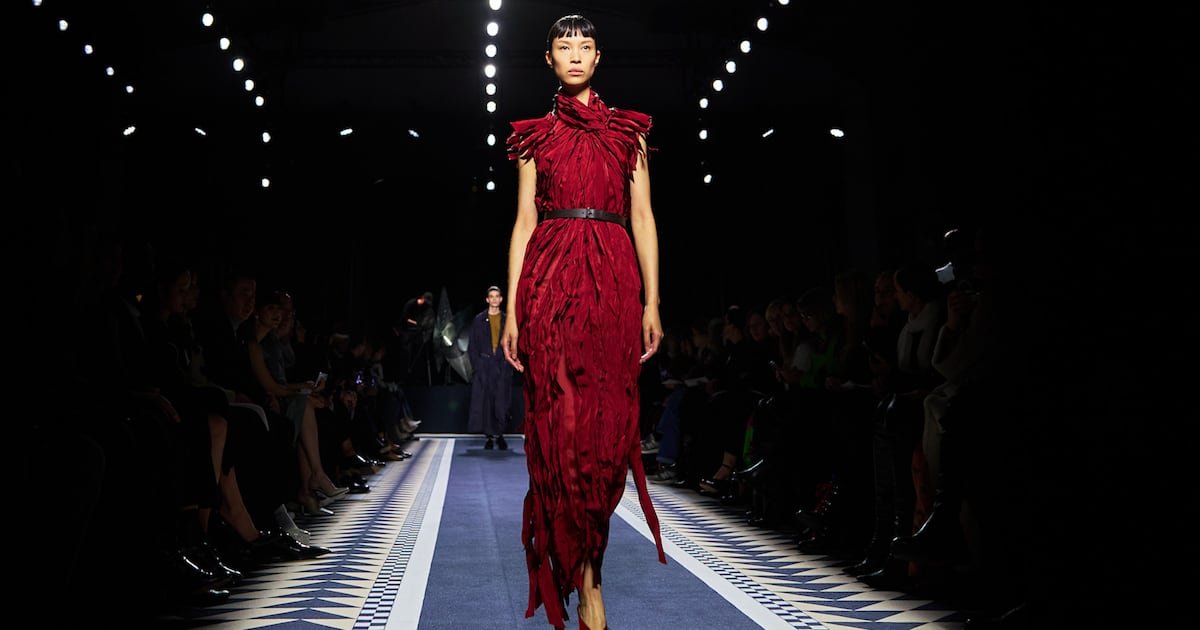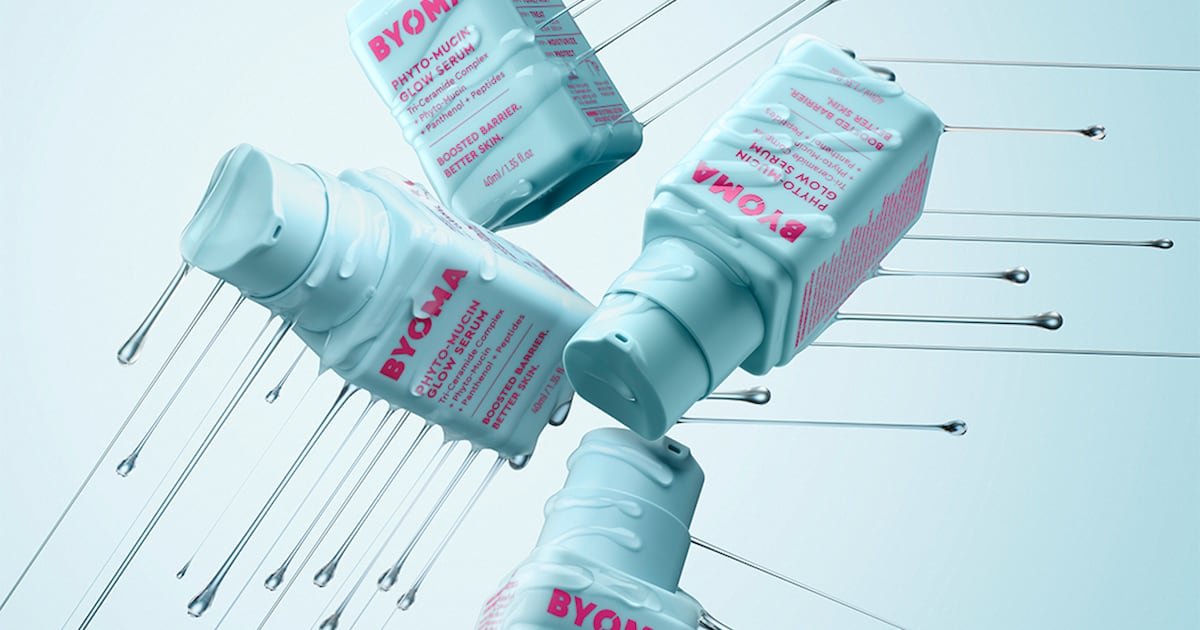
PARIS – After a decade of instability — with its creative direction, management, ownership structure and finances all in flux — one could be forgiven for thinking Lanvin had run out of second chances. And yet last year Peter Copping was handed a rare opportunity to reintroduce the 135-year-old house, which had slipped off the fashion week schedule for two years.
Fatigue with the brand’s attempts at viral couture had primed the market to cheer the appointment of the English artistic director, a gifted dressmaker known for his heritage-inflected couture vision, when it was announced in June. Then a sticky contract for his last role (overseeing Balenciaga’s couture collection under Demna) saw Copping’s debut show pushed off to January’s menswear season, which turned out to be particularly sparse, setting up Lanvin as an unlikely highlight.
And while a luxury downturn has piled on further pressure for Lanvin (first-half sales fell 14 percent year-on-year), lower volumes across the industry meant more availability from A-list suppliers, who in busier years might have snubbed a smaller outfit like Lanvin (controlled by China’s Fosun conglomerate) to prioritise business with bigger rivals like LVMH. “We’re not necessarily the highest priority, so it means a lot to have such a strong support from the manufacturers — the feedback from suppliers has been that they really like what they’ve been asked to make,” Copping told BoF.
Closing out the Paris menswear season with a co-ed runway show Sunday night, Copping seized the moment. His self-assured, polished debut dug into Lanvin’s archives from the 1920s and 30s, when founder Jeanne Lanvin had established herself as a leading figure in the Art Deco movement. “I found there was a modernity to the clothes that still kind of resonates today in terms of silhouette, even the fabrics, some of the graphics. I thought it just seemed very relevant,” Copping said.
The collection featured bias-cut tunic dresses, sartorial ankle-length peacoats, and graphic zig-zag and floral motifs. Copping updated that Art Deco vocabulary with a contemporary eye, while preserving a classic ethos — rendering an archival one-shoulder gown in shredded silk taffeta, for example, or raising the hem on a Junon-like petalled skirt in a crumpled bronze.
Period details were more toned-down in the men’s offer (excepting a mirrored sequin top), which represented a surprisingly mature initial foray into menswear for Copping (It may have helped that the brand’s men’s studio and atelier haven’t been through quite as much turmoil as the women’s side. Copping is Lanvin’s third menswear chief since 2015; as opposed to its fifth for women’s). Well-cut car coats, furry intarsia sweaters and double-breasted dinner jackets were well executed — if hardly a recipe for buzz — and probably more aligned with how the global luxury customer imagines French chic than a grittier look informed by actual street style would have been.
Indeed, a sincere embrace of French elegance and sophistication is what Lanvin’s leaders — Copping and Siddhartha Shukla, its general manager since 2022 — feel has been missing from the fashion scene. “Jeanne Lanvin herself used to speak about the chic ultime, and that’s probably where my sensibility sits, too, designing a rather polished look,” Copping said.
“There is a kind of Frenchness to what I’m doing here, which is having a richness of fabric and embellishment, with a silhouette that can sometimes be quite minimal,” he added. “I want to make beautiful clothes which have a personality, but I want them to feel like real clothes as well. I’m not designing for Instagram — because I think there’s a lot of that at the moment.”
Of course, claiming to provide the “ultimate chic” could be setting the brand up for disappointment in a world where Lanvin is strapped for resources. Its New York-based parent company reported deepening losses in the first half of 2024, with adjusted EBITDA of negative $41 million.
Copping’s show was the brand’s first runway outing since March 2023, as aligning on the strategic direction and budget for a new designer was held up by instability at Lanvin’s owners, including the surprise exit of Lanvin Group’s chairman and CEO Joann Cheng in late 2023 and an ongoing effort to restructure debts at controlling shareholder Fosun. Earlier this month, the brand announced it would change CEOs again.
Lanvin’s refreshed look will need to stand up against rival French propositions from deep-pocketed brands, from Saint Laurent’s slick, sexy chic and Dior’s grand fantasy chic to Balenciaga’s futurist chic, Celine’s bourgeois chic, and Schiaparelli’s archeological chic. Will Lanvin’s “ultimate chic” be enough?
Shukla underscores that the catchphrase is Jeanne Lanvin’s, not theirs, and that it’s already proven a powerful tool as an organizing principle and “rallying cry” for the brand. “It’s about seeking out a form of elegance and sophistication without compromise,” Shukla said.
Despite its 135 years in business, Lanvin has precious little in the way of identifiable brand codes compared to most rivals in the luxury space; and Shukla and Copping are racing to reassert the DNA the brand does have. There’s its association with Art Deco, which informed a new logo and typeface by M/M Paris as well as the 20s and 30s vocabulary of Copping’s debut. There’s also Jeanne Lanvin’s favoured palette of powdery blues (which she is said to have originally spotted in Fra Angelico’s paintings). The new team has picked a shade (less robin’s egg, more periwinkle than previous iterations) and is running with it as a signature hue. And then there’s the iconic mother-and-child pictogram, which will be found on items in the broader commercial offer, but didn’t make it onto the runway. Instead, Lanvin is picking up on the “transgenerational cues” suggested by the motif — embodied by a broad range of ages, including non-professional models, in Sunday’s casting.
“Her muse was her daughter. That sense of family was very inspiring for me, even if family doesn’t necessarily have to mean a mother and a daughter or a father and a son any longer,” Copping explained. “I like the idea of creating some sort of Lanvin family, and bringing people into the fold that can become part of a larger creative network, in a way.”



